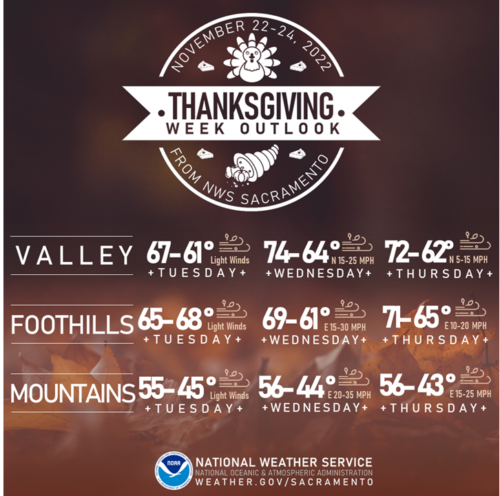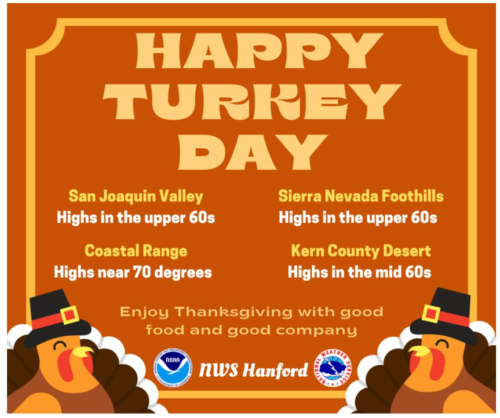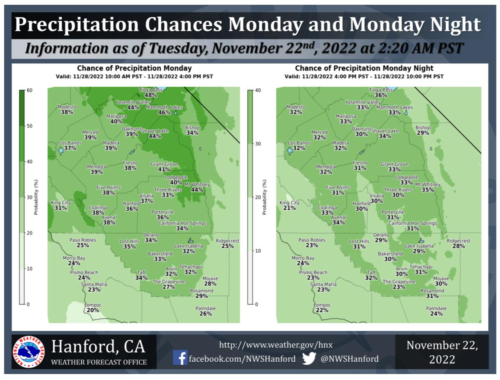In California water news today …
Question of water rights looms over controversial proposed new dam
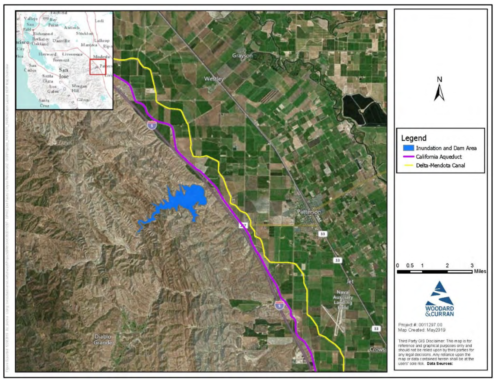 “A controversial proposed dam seems to have a new pathway forward. But how far will it get through California’s byzantine world of water rights? Nobody seems to agree on an answer. The Del Puerto Canyon Reservoir is a joint project between the Del Puerto Water District and the San Joaquin River Exchange Contractor Authority on the west side of the San Joaquin Valley. A Stanislaus County Superior Court judge on Oct. 31 dismissed a host of environmental challenges against the project as well as all concerns brought by another group of irrigators, the Friant Water Supply Protection Association. The judge did kick back Del Puerto’s environmental impact report on one issue, a road relocation that he said had insufficient information. ... ” Read more from SJV Water here: Question of water rights looms over controversial proposed new dam
“A controversial proposed dam seems to have a new pathway forward. But how far will it get through California’s byzantine world of water rights? Nobody seems to agree on an answer. The Del Puerto Canyon Reservoir is a joint project between the Del Puerto Water District and the San Joaquin River Exchange Contractor Authority on the west side of the San Joaquin Valley. A Stanislaus County Superior Court judge on Oct. 31 dismissed a host of environmental challenges against the project as well as all concerns brought by another group of irrigators, the Friant Water Supply Protection Association. The judge did kick back Del Puerto’s environmental impact report on one issue, a road relocation that he said had insufficient information. ... ” Read more from SJV Water here: Question of water rights looms over controversial proposed new dam
A warm, dry (and windy, for some) Thanksgiving in California, but a pattern shift in early Dec?
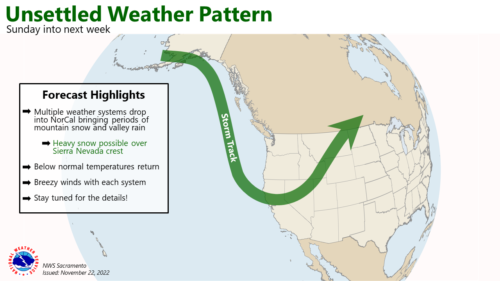 Dr. Daniel Swain writes, “This is the first time I’ve been able to say this in quite a while: the past 30 days have been a remarkably cool to cold period across essentially all of the American West, including California. In fact, in some places, the past ~30 days or so have been among the coldest such mid-Oct to mid-Nov periods in the past 40 years! (We’ve become so accustomed to record heat in this part of the world that any widespread, sustained period of unusually cold weather feels all the more notable.) These unusually cool temperatures have coincided with a relatively active weather regime for most of the period, with healthy early season snow accumulations in many mountain areas across the West. … The good news? A return to more seasonable wetter and cooler conditions may occur sooner rather than later. There have been hints for a while now of a possible shift back toward a more active pattern in California around early December. While it certainly doesn’t appear dramatic at the moment, multi-model ensembles continue to suggest a reasonable shot at more substantial lowland rain and mountain snowfall again around Dec 1. ... ” Read more from Weather West here: A warm, dry (and windy, for some) Thanksgiving in California, but a pattern shift in early Dec?
Dr. Daniel Swain writes, “This is the first time I’ve been able to say this in quite a while: the past 30 days have been a remarkably cool to cold period across essentially all of the American West, including California. In fact, in some places, the past ~30 days or so have been among the coldest such mid-Oct to mid-Nov periods in the past 40 years! (We’ve become so accustomed to record heat in this part of the world that any widespread, sustained period of unusually cold weather feels all the more notable.) These unusually cool temperatures have coincided with a relatively active weather regime for most of the period, with healthy early season snow accumulations in many mountain areas across the West. … The good news? A return to more seasonable wetter and cooler conditions may occur sooner rather than later. There have been hints for a while now of a possible shift back toward a more active pattern in California around early December. While it certainly doesn’t appear dramatic at the moment, multi-model ensembles continue to suggest a reasonable shot at more substantial lowland rain and mountain snowfall again around Dec 1. ... ” Read more from Weather West here: A warm, dry (and windy, for some) Thanksgiving in California, but a pattern shift in early Dec?
NOAA winter outlook released: What it means for California
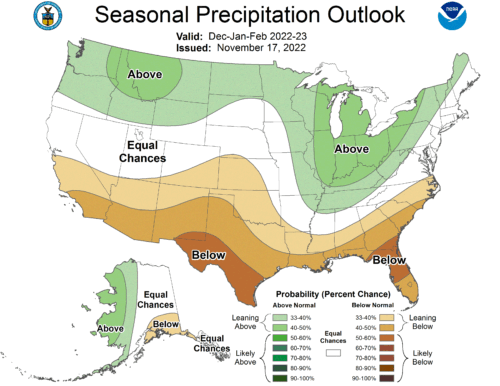 “Most Californians don’t expect to see anything like a white Christmas, but this year, even a damp Christmas is looking unlikely. An update to the Climate Prediction Center’s official winter forecast shows a hot and dry season ahead for much of the Golden State. The 90-day outlook was published Thursday morning by the Climate Prediction Center, part of the National Oceanic and Atmospheric Administration’s (NOAA) National Weather Service. It gives people a rough idea of what December, January and February will look like across the country. The outlook shows the effects of La Niña still clearly visible. A La Niña climate pattern tends to divide the country in half, bringing a dry winter to the southern half and a wetter winter to the northern half. … ” Read more from KTLA here: NOAA winter outlook released: What it means for California
“Most Californians don’t expect to see anything like a white Christmas, but this year, even a damp Christmas is looking unlikely. An update to the Climate Prediction Center’s official winter forecast shows a hot and dry season ahead for much of the Golden State. The 90-day outlook was published Thursday morning by the Climate Prediction Center, part of the National Oceanic and Atmospheric Administration’s (NOAA) National Weather Service. It gives people a rough idea of what December, January and February will look like across the country. The outlook shows the effects of La Niña still clearly visible. A La Niña climate pattern tends to divide the country in half, bringing a dry winter to the southern half and a wetter winter to the northern half. … ” Read more from KTLA here: NOAA winter outlook released: What it means for California
How California’s snowpack in the Sierra looks from space
In this Weather Extra segment, meteorologist Darren Peck shows us how the state looks dramatically different from space compared to a year ago when it comes to the snowpack in the Sierra.
Delta Adapts: On the way to a multi-benefit climate adaptation strategy
“Climate change is already altering the physical environment of the Delta, resulting in significant impacts on its people and resources that are only expected to worsen over time. The Delta Stewardship Council recognized the need to address climate change and completed the Delta Adapts Vulnerability Assessment in 2021, which is the first comprehensive study of projected climate hazards in the Delta and Suisun Marsh, identifying the people and resources most vulnerable to increased flood risk, extreme heat, drought, and wildfire smoke. These climate impacts in the Delta will not be felt equally: certain communities are more vulnerable due to disproportionately high exposure to these hazards, heightened sensitivities, and reduced ability to adapt to these impacts. Currently under development, the Adaptation Strategy will focus on four areas with an emphasis on equity throughout: flood risk reduction, ecosystem enhancement and protection, water supply reliability, and agriculture. To ensure our Adaptation Strategy reflects values from the wide range of Delta interests, we will continue to engage with representatives from diverse groups … ” Continue reading from the Delta Stewardship Council here: Delta Adapts: On the way to a multi-benefit climate adaptation strategy
Stanford researchers use airborne technology to spot groundwater recharge sites
“Recently, researchers from Stanford flew California skies on a kind of airborne treasure hunt. Probing hundreds of feet into the ground with electromagnetic signals, they were in search of liquid gold – water, or more precisely a place to capture and store it. “When we look at what’s likely to be the freshwater future in California, the total amount of precipitation isn’t necessarily going to be less, but there’s going to be more intense storms, more intense droughts. So the idea is when we have intense storms, capture floodwater, divert it to locations such as this, get it into the ground to recover from the previous drought or prepare for the next,” explains Rosemary Knight, Ph.D., a researcher with the Stanford Doerr School of Sustainability. … ” Read more from ABC Channel 7 here: Stanford researchers use airborne technology to spot groundwater recharge sites
The U.S. Promised tribes they would always have fish, but the fish they have pose toxic risks
“Salmon heads, fins and tails filled baking trays in the kitchen where Lottie Sam prepped for her tribe’s spring feast. The sacred ceremony, held each year on the Yakama reservation in south-central Washington, honors the first returning salmon and the first gathered roots and berries of the new year. “The only thing we don’t eat is the bones and the teeth, but everything else is sucked clean,” Sam said, laughing. Sam is a member of the Confederated Tribes and Bands of the Yakama Nation. They are among several tribes with a deep connection to salmon in the Columbia River Basin, a region that drains parts of the Rocky Mountains of British Columbia, Canada, southward through seven U.S. states into the West’s largest river. It’s also a region contaminated by more than a century of industrial and agricultural pollution, leaving Sam and others to weigh unknown health risks against sacred practices. … ” Read more from Pro Publica here: The U.S. Promised tribes they would always have fish, but the fish they have pose toxic risks
Cultural burning is key to fighting severe wildfires, Indigenous practitioners say
“Melinda Adams crouched into a patch of tall grass. In one hand, she held a burning bundle of tule and cattail. She held the bundle like a torch and gently held it against the grass. Slowly, it started to catch fire. She stood up quickly. Then, making her way a few feet over, she repeated the process. “It’s pretty exciting to see how well it’s responding,” Adams said later, watching the fire progress. It was a sunny, dry November afternoon — good conditions for burning. The patch of land Adams helped treat lies within the Cache Creek Nature Preserve, a site about a half hour west of Sacramento. The area was once dedicated to mining until it was turned into a restoration area in 1996. More recently, starting in 2019, it’s been a consistent site for cultural burning during colder months. … ” Read more from Capital Public Radio here: Cultural burning is key to fighting severe wildfires, Indigenous practitioners say
In regional water news and commentary today …
Research teams gather data on storm pollution impact on San Francisco Bay
“For researchers Martin Trinh and David Peterson, a break in the rain means a chance to measure the minute changes a passing storm may have brought to the San Francisco Bay. And they’re not always good. For decades, storm runoff has carried along dangerous pollutants like mercury and PCBs. And the threat is still evolving. “We’ve identified a new class of chemicals that we refer to as contaminants of emerging concern. And so these are going to be chemicals that are typically used in modern products, says Trinh. Trinh and Peterson are with the San Francisco Estuary Institute and are members of a kind-of-quick strike force known as “RMP,” for “Regional Monitoring Program for Water Quality” in the San Francisco Bay. The members often deploy in the middle of storms, even late at night, to capture and sample runoff. Alicia Gilbreath leads the team. … ” Read more from ABC 7 here: Research teams gather data on storm pollution impact on San Francisco Bay
Zone 7 adopts 5.5% annual water rate increases through 2026
“Pleasanton is set to see a 5.5% rise in the annual rates for wholesale water services from the Zone 7 Water Agency for each of the next four years after its Board of Directors voted 5-2 to approve the price increase last week. Intended to help fund water treatment efforts and regional supply projects as well as maintain Zone 7 operations and reserves, the first new rate will go into effect in February and each subsequent rate increase will occur on Jan. 1 of each year. … ” Read miore from Pleasanton Weekly here: Zone 7 adopts 5.5% annual water rate increases through 2026
A Southern California town reckons with its disappearing beaches
“On a sunny fall morning, waves crashed against a slope made up of huge boulders, or riprap, sending spray over the adjacent railroad tracks. These tracks, south of San Clemente State Beach in Southern California, are part of the only freight rail line that connects the Port of San Diego with the rest of the country. This is also the route of the popular Amtrak Surfliner that hugs the coast all the way up to San Luis Obispo in Central California. But in late September, authorities shut down passenger rail service and slowed freight service through San Clemente because the tracks here are in danger of sliding into the ocean. … Southern California’s economy and identity are intimately tied to its beaches. But the coast is now facing a reckoning with its history of beachfront development and the climate crisis, and that’s all coming to a head along this iconic rail line. ... ” Read more from Marketplace here: A Southern California town reckons with its disappearing beaches
Along the Colorado River …
Coachella Valley Water District joins multi-agency commitment to reduce demand on Colorado River
“Understanding the need for action, Coachella Valley Water District (CVWD) has committed to take additional measures to reduce water demands on the drought-stricken Colorado River alongside 30 other water agencies from municipal and public water providers in the Upper and Lower Colorado River Basin. A Memorandum of Understanding (MOU) was delivered to U.S. Bureau of Reclamation Commissioner Camille Touton to affirm commitments to implement comprehensive and innovative water conservation programs. “CVWD is well-positioned to join our colleagues in a larger effort to reduce demand on the River thanks to the water-efficiency actions we have implemented over the years,” said CVWD Board President John Powell Jr.” We are committed to continuing our efforts to bring the supply and use of the river into balance for future generations and to support our local economy.” … ” Read more from the Coachella Valley Water District here: Coachella Valley Water District joins multi-agency commitment to reduce demand on Colorado River
Arizona State University will lead initiative to help secure future water supply
“Arizona State University and Arizona Gov. Doug Ducey have announced that the university will lead a multiyear Arizona Water Innovation Initiative to provide immediate, actionable and evidence-based solutions to ensure that Arizona will continue to thrive with a secure future water supply. The governor has committed resources and asked ASU to work with industrial, municipal, agricultural, tribal and international partners to rapidly accelerate and deploy new approaches and technology for water conservation, augmentation, desalination, efficiency, infrastructure and reuse. “Since the very beginning of my administration, Arizona’s water future has been a focus, and today’s announcement will advance our efforts to use every tool possible to make sure communities across the state have access to the water they need,” Ducey said Wednesday. … ” Read more from Arizona Big Media here: Arizona State University will lead initiative to help secure future water supply
In national water news today …
How floating wetlands are helping to clean up urban waters
“Five small islands roughly the size of backyard swimming pools float next to the concrete riverbank of Bubbly Creek, a stretch of the Chicago River named for the gas that once rose to the surface after stockyards dumped animal waste and byproducts into the waterway. Clumps of short, native grasses and plants, including sedges, swamp milkweed, and queen of the prairie, rise from a gravel-like material spread across each artificial island’s surface. A few rectangles cut from their middles hold bottomless baskets, structures that will, project designers hope, provide an attachment surface for freshwater mussels that once flourished in the river. Three thousand square feet in total, these artificial wetlands are part of an effort to clean up a portion of a river that has long served the interests of industry. This floating wetland project is one of many proliferating around the world as cities increasingly look to green infrastructure to address toxic legacies. … ” Read more from Yale E360 here: How floating wetlands are helping to clean up urban waters
EPA, watchdog clash over water cyberthreats
“EPA and the agency’s inspector general are at odds over whether federal oversight is sufficient to ensure U.S. water operators are protected against hackers and other saboteurs. EPA’s inspector general today released an audit, which found weaknesses in the agency’s oversight of thousands of water system operators, including a lack of accurate contact information, insufficient resources to get the job done, and a lack of clear and transparent communication with smaller systems that failed to comply. The findings highlight a growing area of concern for critical infrastructure in the U.S. Last year, a hacker altered chemical levels at a water plant in Florida. In March 2019, a former worker at a Kansas water system threatened drinking water safety after using credentials that had not been revoked to remotely access a system computer, according to the EPA inspector general. And in 2018, a ransomware attack on the city of Atlanta disrupted city utilities, and workers at the city’s water system were unable to turn on their computers or gain wireless internet access. … ” Read more from E&E News here: EPA, watchdog clash over water cyberthreats
Adding PFAS class to contaminant list, U.S. EPA sets stage for stricter regulation
“The U.S. EPA has signaled that its cornerstone drinking water regulation could soon expand to better protect against one of the country’s most notorious contaminants. “The U.S. EPA published a new list of chemicals … that could be subject to Safe Drinking Water Act (SDWA) regulations in the next five years, including a ‘substantial expansion’ to cover numerous PFAS chemicals,” Waste Dive reported. “The list … lists per- and polyfluoroalkyl substances as a group rather than individually. Previously, the agency only listed individual PFAS for certain regulations.” ... ” Read more from Water Online here: Adding PFAS class to contaminant list, U.S. EPA sets stage for stricter regulation
Precipitation watch …
Also on Maven’s Notebook today …
FUNDING OPPORTUNITY: U.S. Fish and Wildlife Service Seeks Project Applications for $38 Million in Fish Passage Funding


